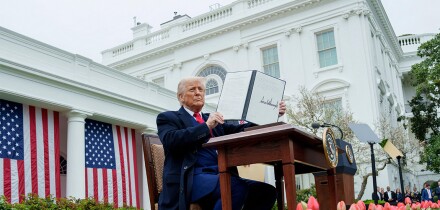Real options are increasingly being used for strategic decision-making. Recently, a prominent consultant in the field estimated $30-40 billion in corporate transactions and investments were evaluated and executed last year using real option valuation technologies.
The Switching Option
The switching option can refer either to switching inputs or outputs in a production process. Input switching is common in industries where production inputs are flexible, such as electric power and rotated-crop farming. For example, power can be generated using natural gas turbines, hydroelectric and pump storage facilities, fossil fuels, nuclear fuels, and the like. If the price of natural gas rises significantly with respect to the price of fossil fuels like coal, the ability to switch generation from gas turbines to coal-fired plants is valuable.
Output switching is valuable and common in industries whose outputs are characterized both by volatile demand and by small-batch production. An excellent example of the output switching option that is beneficial to the product buyer and easily accommodated by the seller is the option to switch aircraft types provided by Airbus Industrie. When airlines want to purchase aircraft from Airbus, they enter into purchase agreements that obligate them to a family of aircraft, but not to a specific type. The purchase agreements may give the airline the option to buy planes for several years. Once exercised, there is still a manufacturing lead time required to produce the aircraft. For example, a purchase agreement might entitle the airline to a four-year option to buy a family of aircraft and an 18-month manufacturing lead time between the airline's decision to exercise its purchase option and the actual delivery. For example, Airbus offers the A319/A320/A321 family, which differ primarily based on seat numbers. The A319 and A320 seat 120 and 150 people, respectively, but otherwise do not differ materially.
The flexibility afforded the purchase of Airbus aircraft is the option to defer investment. Not only can the airlines decide not to purchase at all, but they can choose the product they want after getting a better sense of their demand curves. This flexibility can be offered by Airbus because of Airbus' own output switching option created by its standardized production processes. Specifically, each family of aircraft comes off the same assembly line. Because the A330 and A340 are produced on the same production line, the cost of switching A330 and A340 to meeting customer demand is next to zero. This greatly enhances the ability of Airbus to tailor its production decisions to the demands of its customers.
The switching option can be viewed in the two-asset case--the option for airlines between the A319 and A320--as an exchange option or an option on the better of two assets. Recall that an option on the better of two assets has an expiration value of
max[S 1(T), S2 (T)] = S1 (T) max[S1 (T) S2 (T), 0]
or the value of one asset (net of its acquisition costs) minus the value of the option to exchange that asset for a second asset. In the Airbus example, S1 (T) and S2 (T) might denote the present values to an airline of an A319 order or an A320 order, respectively, both of which would depend on the demand for travel observed at time T.
The graph at center illustrates the value of this option over time for a given demand curve, where demand is shown as the average number of passengers expected on short-haul flights. The value of the option depends on the timing of its expiration, or the date on which the airline must tell Airbus which aircraft it wants. For times occurring before TC , demand is steadily below 120 seats per flight, which makes the cheaper A319 a sensible and more valuable aircraft choice. But choosing the A319 would be the wrong decision, given that demand quickly rises above the capacity of the A319 after time TC . If the switching options expires after TC , the airline will see the higher demand and thus will choose the bigger (and more expensive) A320 model.
Real Options Defined
Any option in which managerial flexibility to make decisions conveys value on the firm is called a real option. Recall from basic options theory that options are decaying assets. As time passes, the value of an option declines at an increasing rate. For some real options, time decay can be a real risk to be managed. Some examples include:
Waiting-to-invest option: The waiting-to-invest option is a special case of the more general option-to-defer an investment expenditure. The reason this option is a basic one is that, in its pure form, the value of the option is based entirely on interest rate uncertainty and not on market price uncertainty. In other words, the option to wait when making an investment decision has value even when the cash flows on a project aren't totally known.
The Option to Defer: The waiting-to-invest option is a special case of the more general option-to-defer an investment expenditure. In the waiting-to-invest case above, the source of uncertainty was the variability of the interest rate, or the discount rate used to calculate the project's net present value (NPV). When input and output price uncertainty and/or market, credit, and other event-driven risk subject the cash flows of the project to uncertainty, the deferment options become even more interesting and potentially valuable for a firm.
The Option to Abandon a Current Asset: The option to abandon a current asset is the option to terminate all production and operations and sell the current asset for its market value. The abandonment decision is thus permanent unless the company repurchases its assets on the market after liquidating them.
The Time to Build Option: The time-to-build option combines the deferment options and the abandonment option. In the time-to-build option, capital investment expenditures are staged and coupled with the option to abandon the investment project at any time if new information is obtained that reduces the NPV of the project. The presumption is that information impacting the project's NPV is released gradually over time and that investment decisions can be linked to those information releases.
The Option to Alter Operating Scale: Sometimes the abandonment of an asset or current investment is a bit extreme, even if a contraction in demand for the product produced by an investment-intensive production process suggests a smaller scale than initially thought. Temporary shut-down decisions can even make sense in this situation.
Option for Interactive Growth: Interactive growth is an option where the staged investment in one project opens up opportunities for growth in other areas. Mergers and acquisitions, for example, are obvious examples of transactions with embedded options for interactive growth.
This week's Learning Curve was written by Christopher L. Culp, managing director of CP Risk Managementin Chicago, and adjunct associate professor of finance at the University of Chicago. This Learning Curve is adapted from his new book, The Risk Management Process: Business Strategy and Tactics, recently published by John Wiley & Sons.






